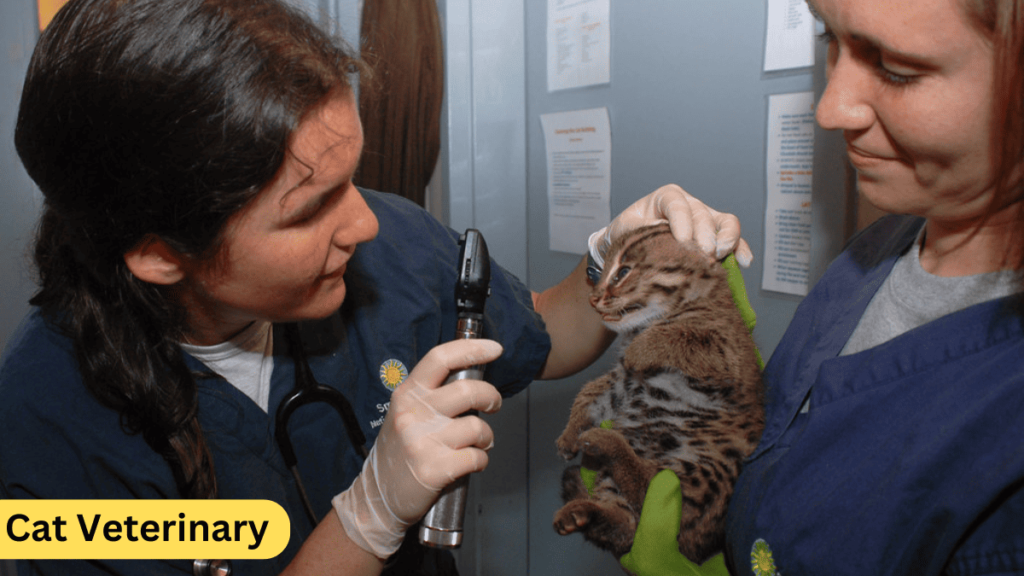
Dry skin in cats is not just a cosmetic issue; it can signal underlying health problems or environmental factors that need attention. Just like humans, cats can experience itchy, flaky, or irritated skin. Fortunately, with the right treatment and care, your feline friend can have healthy, hydrated skin. In this comprehensive guide for 2024, we’ll explore the best cat dry skin treatment, common causes, preventive measures, and frequently asked questions. This guide is crafted to help you make informed decisions, ensuring your cat stays comfortable and happy.
Table of Contents
What Causes Dry Skin in Cats?
Before diving into treatments, it’s crucial to understand the causes of dry skin in cats. There are several reasons why your cat might experience dry skin:
- Dietary Issues: A diet low in essential fatty acids (like Omega-3 and Omega-6) can lead to dry, flaky skin.
- Allergies: Cats can be allergic to food, environmental factors, or even certain grooming products.
- Parasites: Fleas, mites, or ticks can cause skin irritation and lead to excessive scratching.
- Dehydration: Cats need a balanced intake of water to maintain their skin’s moisture.
- Weather Conditions: Cold, dry climates or living in air-conditioned homes can lead to moisture loss.
- Medical Conditions: Conditions such as hypothyroidism, hyperthyroidism, or dermatitis can cause dry skin.
- Over-Grooming: Cats may excessively groom themselves due to anxiety or itchiness, leading to skin damage.
Symptoms of Dry Skin in Cats
- Flaky, scaly skin
- Excessive scratching or licking
- Red or irritated patches
- Dull fur
- Bald spots from over-grooming
- Visible dandruff, especially around the back and neck
Cat Dry Skin Treatment Options

Now that you know the potential causes, let’s explore the most effective treatments to restore your cat’s skin health.
1. Improve Your Cat’s Diet
A balanced diet plays a crucial role in maintaining healthy skin. Foods rich in Omega-3 and Omega-6 fatty acids help nourish the skin and reduce inflammation. You can either switch to cat food formulated for skin health or supplement their diet with fish oil or salmon oil.
- Omega-3 Fatty Acids: Promote healthy skin and reduce dryness.
- Omega-6 Fatty Acids: Encourage skin hydration and strengthen the fur.
2. Hydration Is Key
Dehydration can contribute to dry skin. Make sure your cat has access to fresh, clean water at all times. You may also consider adding wet food to their diet, which can help maintain their moisture levels internally.
3. Moisturizing Shampoos
Choose a gentle, cat-specific moisturizing shampoo that is free from harsh chemicals. Regular baths can soothe dry, flaky skin. Look for ingredients like aloe vera or oatmeal, which can help hydrate the skin and provide relief.
- Aloe Vera: Helps reduce inflammation and provides natural moisture.
- Oatmeal: Soothes irritated skin and reduces itching.
4. Use Humidifiers
Dry indoor air can strip moisture from your cat’s skin. If you live in a dry climate or frequently use heating or air conditioning, a humidifier can help add moisture back into the air, alleviating dry skin.
5. Flea and Parasite Prevention
Parasites such as fleas and mites can wreak havoc on your cat’s skin. Ensure your pet is up-to-date with flea treatments. Spot-on treatments, oral medications, and flea collars are effective options to keep these pests at bay.
6. Topical Treatments
There are various topical creams and lotions made specifically for treating dry skin in cats. Ensure that any product you use is cat-safe and designed for topical application on pets. Avoid human moisturizers, as they can be toxic to cats.
- Coconut Oil: A natural remedy for moisturizing skin.
- CBD Oil: Known for its anti-inflammatory properties, it can help soothe skin irritation.
7. Treat Underlying Health Issues

If your cat’s dry skin persists, it might be linked to an underlying health issue such as allergies, thyroid problems, or dermatitis. Consult your veterinarian to conduct the necessary tests and get the right treatment plan for your cat.
8. Brush Regularly
Brushing helps stimulate your cat’s skin and distribute natural oils across the fur. Regular brushing also helps remove dandruff and improves the overall condition of your cat’s coat.
Read More:
Natural Cat Flea Treatment in 2024: A Complete Guide
Preventive Measures for Dry Skin
Prevention is always better than cure. Here are a few tips to prevent dry skin in your cat:
- Maintain a well-balanced diet.
- Ensure your cat stays hydrated.
- Regularly use flea treatments.
- Use a humidifier in dry environments.
- Groom your cat regularly with the right brushes and tools.
Best Remedies for Cat Dry Skin
| Treatment Option | Benefits | How to Use |
|---|---|---|
| Omega-3 and Omega-6 Fatty Acids | Improves skin hydration and reduces flakes | Add fish oil to your cat’s diet or switch to a high-quality cat food containing these nutrients |
| Aloe Vera and Oatmeal Shampoos | Soothes and moisturizes irritated skin | Bathe your cat with cat-safe moisturizing shampoo every 4-6 weeks |
| Humidifier | Adds moisture to the air, preventing dry skin | Use in rooms where your cat spends the most time, especially during dry weather |
| Coconut Oil | Natural moisturizer for dry skin | Apply a small amount to affected areas, ensuring your cat doesn’t ingest too much |
| Flea Prevention | Prevents parasites that cause skin irritation | Use monthly flea treatments as recommended by your vet |
FAQ About Cat Dry Skin Treatment
Q1: What is the best cat dry skin treatment?
The best treatment depends on the underlying cause. For dietary-related dry skin, Omega-3 and Omega-6 fatty acid supplements are effective. For dry skin due to environmental factors, moisturizing shampoos and the use of a humidifier can help. Always consult your vet for tailored advice.
Q2: How can I treat dry skin in cats at home?
You can treat dry skin at home by improving their diet, moisturizing their skin with cat-safe products, using a humidifier, and maintaining a good grooming routine. Coconut oil can also be applied topically for extra hydration.
Q3: Can I use human lotion on my cat’s dry skin?
No, human lotions are not safe for cats and may contain ingredients toxic to them. Always use cat-specific products.
Q4: How often should I bathe my cat with dry skin?
Cats generally do not require frequent baths, but if they have dry skin, you can use a moisturizing shampoo every 4-6 weeks. Make sure to consult your vet to avoid over-bathing.
Q5: Can flea infestations cause dry skin in cats?
Yes, flea infestations can cause itching, scratching, and dry skin. It’s essential to use flea preventatives regularly to avoid skin irritation.
Conclusion: Keeping Your Cat’s Skin Healthy in 2024
Dry skin in cats can be uncomfortable, but it’s manageable with the right care and treatment. Whether it’s a matter of diet, environmental factors, or underlying health conditions, addressing the root cause of dry skin will lead to healthier, more comfortable skin for your cat. Regular check-ups, grooming, and a focus on nutrition can go a long way in preventing and treating dry skin in your feline companion.
By following this guide, you can ensure your cat receives the best care for dry skin in 2024, helping them live a happy, itch-free life.
